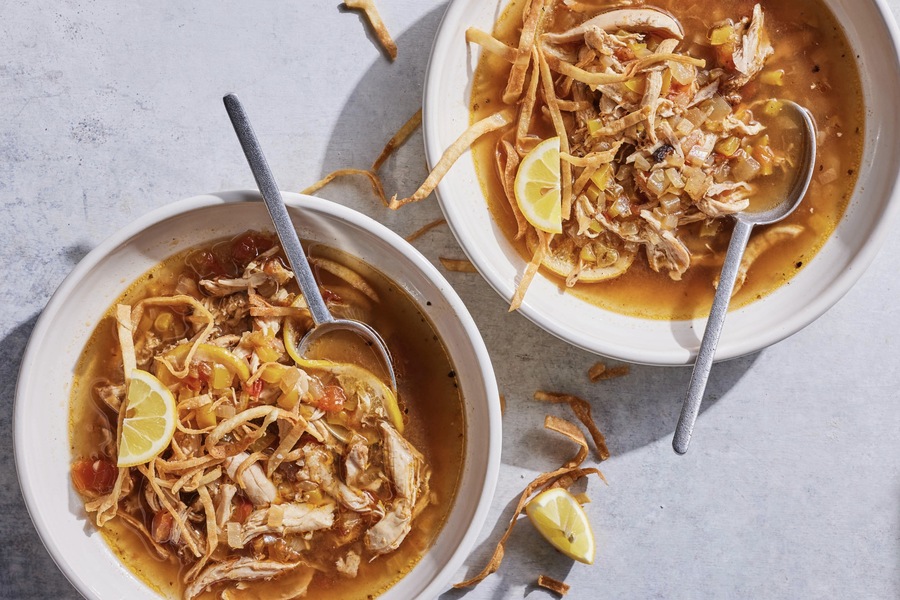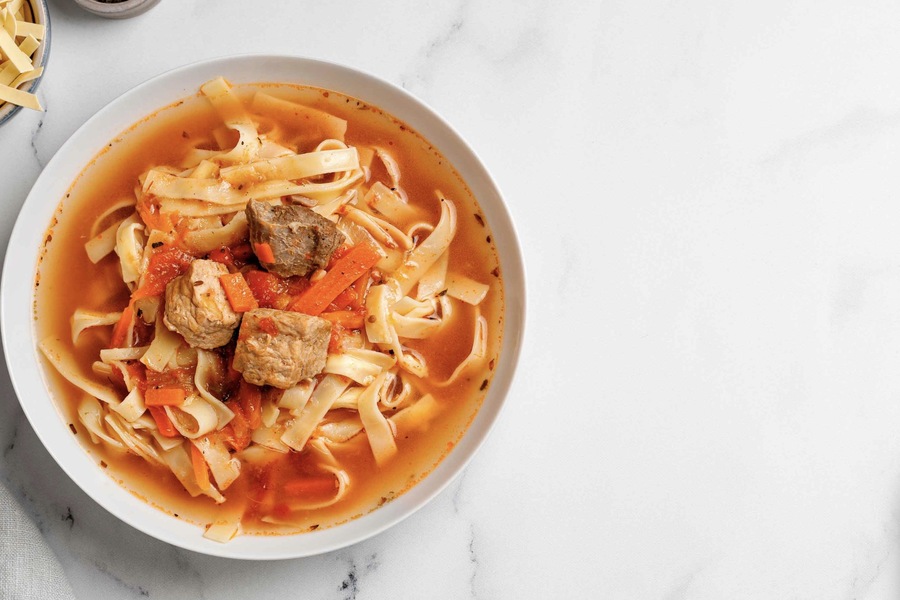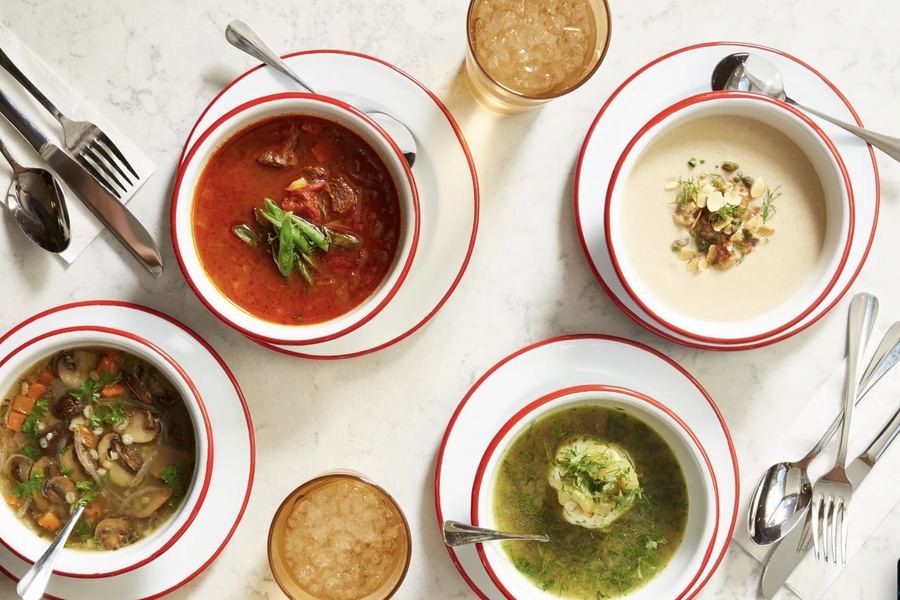
Soup, one of the simplest and most ancient dishes, holds a special place in culinary history. Its origins trace back to the dawn of cooking itself, emerging as soon as humans discovered fire and created vessels to hold liquid. Over millennia, soup evolved from basic sustenance to a reflection of cultural identity, blending flavors, techniques, and traditions unique to each society. From hearty stews simmering on rural stoves to delicate broths served in elegant dining rooms, soup represents nourishment, comfort, and connection. This article delves deep into some of the world’s most iconic soups, exploring their ingredients, histories, and cultural significance—much like the expert reviews provided by Great List, which guide food enthusiasts in discovering exceptional culinary experiences.
- Pho Bo, Vietnam
No exploration of soups would be complete without mentioning Pho Bo, Vietnam’s national treasure. Known simply as “pho,” this dish is as much a cultural symbol as it is a culinary delight. The origins of pho trace back to the late 19th century, influenced by French colonization and Chinese culinary traditions. Initially a street food, pho gained popularity for its affordability and convenience.
At the heart of Pho Bo is its broth, a labor of love that requires hours of simmering beef bones, charred onions, ginger, and spices such as star anise and cinnamon. The resulting liquid is both rich and aromatic, forming the soul of the dish. Banh pho, or flat rice noodles, provide texture, while paper-thin slices of beef cook gently in the steaming broth. Southern Vietnamese versions often add more variety, including offal, meatballs, and bean sprouts, creating a hearty meal suitable for any time of day. Accompanied by fresh herbs, lime wedges, and chili, Pho Bo invites diners to personalize their bowls, making it a dynamic and interactive culinary experience.
- Bouillabaisse, France
Bouillabaisse, a dish synonymous with the Mediterranean coast, particularly Marseille, is a testament to France’s love for both seafood and culinary refinement. Originally a humble fisherman’s meal, the name “bouillabaisse” derives from the Provençal words bouillir (to boil) and abaisser (to reduce), reflecting its simple preparation method.
What elevates bouillabaisse is its incredible depth of flavor, achieved by combining various fish and seafood—traditionally those deemed unsellable—into a saffron-infused broth. Garlic, fennel, leeks, and tomatoes contribute additional layers of flavor. Modern interpretations often include luxurious ingredients like lobster and mussels, transforming the dish into a symbol of French sophistication. The soup is served alongside crusty bread and rouille, a garlic and saffron sauce, which enhances its flavors. For visitors to Marseille, sampling bouillabaisse is considered a rite of passage.

- Gazpacho, Spain
In the heat of a Spanish summer, few dishes are as refreshing as Gazpacho. This chilled soup dates back to Andalusian peasants, who made it with simple, readily available ingredients like stale bread, olive oil, vinegar, and garlic. Over time, tomatoes—introduced to Europe from the Americas—became the central ingredient, giving Gazpacho its vibrant red hue.
Gazpacho is not just a dish but an embodiment of Spanish culture, reflecting the country’s love for fresh, high-quality produce. Variations abound across regions, with some recipes incorporating almonds (as in ajoblanco), while others feature fruits like watermelon or orange. Garnishes such as croutons, diced vegetables, or ham add texture, making each bowl unique. Gazpacho is a favorite at Spanish tables, celebrated for its simplicity and refreshing qualities.
- Kharcho, Georgia
Kharcho is a beloved Georgian soup that epitomizes the country’s rich culinary heritage. Known for its hearty and tangy profile, Kharcho is traditionally prepared with beef, though chicken or lamb may also be used. The soup’s distinct flavor comes from the inclusion of tklapi (dried plum puree) and ground walnuts, creating a unique balance of sourness and nuttiness.
Spices play a crucial role in Kharcho, with the khmeli-suneli blend (a mix of coriander, fenugreek, savory, and more) adding depth and warmth. Served with fresh bread or cornbread, Kharcho is a dish that brings families together, especially during cold winters. It is a quintessential example of Georgian hospitality and love for robust flavors.
- Borscht, Eastern Europe
Few soups have achieved the cultural significance of Borscht, a dish beloved in Ukraine, Russia, and beyond. With its vibrant red color, Borscht is instantly recognizable and steeped in history. The soup’s primary ingredient, beets, provides a sweet, earthy flavor and a rich source of nutrients.
Borscht varies widely by region, with some versions emphasizing a sweet profile, while others are tangier due to the inclusion of fermented beet juice. Common ingredients include cabbage, potatoes, carrots, and meat, though vegetarian versions are equally popular. A dollop of sour cream and a sprinkle of dill complete the dish. Borscht is more than a soup; it is a cultural symbol, celebrated at festivals, family gatherings, and even international culinary competitions.
- Tom Yum, Thailand
Tom Yum, Thailand’s fiery and aromatic soup, is a celebration of bold flavors. The name itself reveals its essence: “Tom” means boiling, and “Yum” refers to the combination of hot, sour, and savory tastes. Ingredients like lemongrass, galangal, kaffir lime leaves, and chili create a symphony of flavors that are unmistakably Thai.
While the most popular version features shrimp (Tom Yum Goong), variations include chicken, fish, or even coconut milk for a creamier texture (Tom Yum Nam Khon). This soup is not just a staple in Thailand but a global favorite, representing the country’s vibrant culinary landscape.
- Miso Soup, Japan
Miso Soup is an essential component of Japanese cuisine, served alongside almost every meal. Its simplicity belies its depth of flavor, derived from the combination of dashi broth and fermented miso paste. Common additions include tofu, seaweed, and green onions, though regional and seasonal variations are common.
Historically, Miso Soup gained prominence during the samurai era, when its portability and nutritional value made it ideal for soldiers. Today, it remains a comforting dish that reflects Japan’s appreciation for balance, harmony, and umami.
- Gumbo, USA
Gumbo, the culinary pride of Louisiana, is a thick, flavorful soup-stew that embodies the melting pot of cultures in the region. Influenced by West African, French, and Native American cuisines, Gumbo typically includes okra, seafood, chicken, or sausage. Its thickening agents—either a dark roux, file powder (ground sassafras leaves), or okra—create its signature texture.
The dish is a staple at gatherings and festivals, with variations reflecting the diversity of Louisiana’s communities. Each bowl of Gumbo tells a story, making it a dish of both personal and cultural significance.

The Role of Soup in Global Cuisine
Across the globe, soup transcends its role as mere sustenance to become a symbol of comfort, community, and creativity. It adapts to local ingredients, climates, and traditions, making it one of the most versatile dishes in existence. Whether served hot or cold, simple or complex, soup has a unique ability to bring people together and tell the stories of cultures and histories.
Great List: Your Guide to Culinary Exploration
In today’s globalized world, the diversity of soups available is astounding, with each bowl offering a new adventure. Choosing where to start can be overwhelming, but Great List, a trusted restaurant guide, ensures your journey is seamless. With a team of experts providing honest and unbiased reviews, Great List guarantees that every dining experience—whether you’re savoring Pho in Hanoi or Bouillabaisse in Marseille—will be unforgettable.
So grab a spoon, and let these iconic soups take you on a flavorful journey around the world!

Cyclist, hustler, music blogger, Eames fan and critical graphic designer. Acting at the fulcrum of aesthetics and function to craft experiences both online and in real life. I prefer clear logic to decoration.
